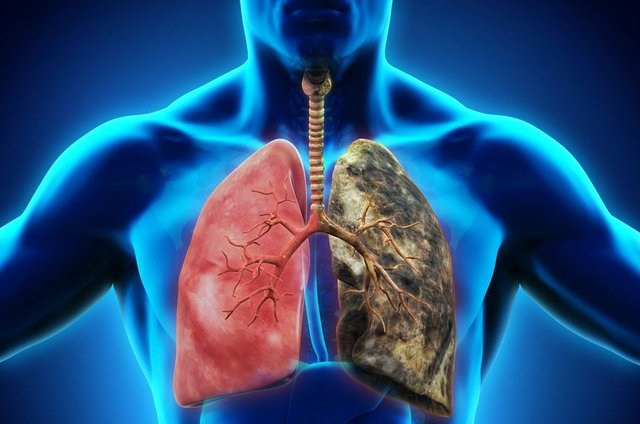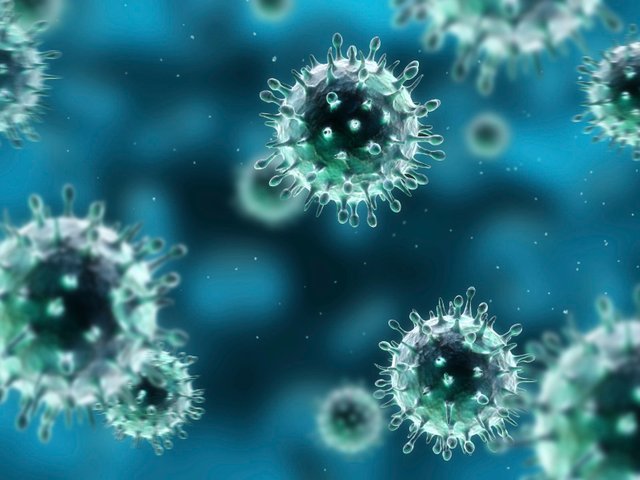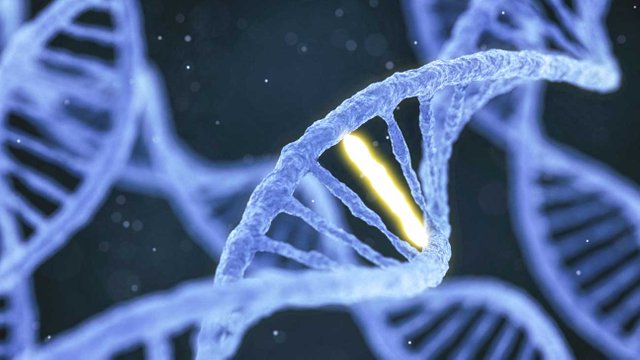A disease is a particular abnormal condition that affects part or all of an organism not caused by external force and that consists of a disorder of a structure or function, usually serving as an evolutionary disadvantage. The study of disease is called pathology, which includes the study of cause. Disease is often construed as a medical condition associated with specific symptoms and signs. It may be caused by external factors such as pathogens or by internal dysfunctions, particularly of the immune system, such as an immunodeficiency, or by a hypersensitivity, including allergies and autoimmunity.
When caused by pathogens (e.g. malaria by Plasmodium ssp.), the term disease is often misleadingly used even in the scientific literature in place of its causal agent, the pathogen. This language habit can cause confusion in the communication of the cause-effect principle in epidemiology, and as such it should be strongly discouraged.
In humans, disease is often used more broadly to refer to any condition that causes pain, dysfunction, distress, social problems, or death to the person afflicted, or similar problems for those in contact with the person. In this broader sense, it sometimes includes injuries, disabilities, disorders, syndromes, infections, isolated symptoms, deviant behaviors, and atypical variations of structure and function, while in other contexts and for other purposes these may be considered distinguishable categories. Diseases can affect people not only physically, but also emotionally, as contracting and living with a disease can alter the affected person's perspective on life.[citation needed]
 source
source
Death due to disease is called death by natural causes. There are four main types of disease: infectious diseases, deficiency diseases, genetic diseases (both hereditary and non-hereditary), and physiological diseases.
Diseases can also be classified as communicable and non-communicable. The deadliest diseases in humans are coronary artery disease (blood flow obstruction), followed by cerebrovascular disease and lower respiratory infections.
Only some diseases such as influenza are contagious and commonly believed infectious. The micro-organisms that cause these diseases are known as pathogens and include varieties of bacteria, viruses, protozoa and fungi. Infectious diseases can be transmitted, e.g. by hand-to-mouth contact with infectious material on surfaces, by bites of insects or other carriers of the disease, and from contaminated water or food (often via fecal contamination), etc.[22] In addition, there are sexually transmitted diseases. In some cases, microorganisms that are not readily spread from person to person play a role, while other diseases can be prevented or ameliorated with appropriate nutrition or other lifestyle changes.
Types of causes
Airborne
An airborne disease is any disease that is caused by pathogens and transmitted through the air.
Foodborne
Foodborne illness or food poisoning is any illness resulting from the consumption of food contaminated with pathogenic bacteria, toxins, viruses, prions or parasites.
Infectious
Infectious diseases, also known as transmissible diseases or communicable diseases, comprise clinically evident illness (i.e., characteristic medical signs or symptoms of disease) resulting from the infection, presence and growth of pathogenic biological agents in an individual host organism. Included in this category are contagious diseases – an infection, such as influenza or the common cold, that commonly spreads from one person to another – and communicable diseases – an disease that can spread from one person to another, but does not necessarily spread through everyday contact.
Lifestyle
A lifestyle disease is any disease that appears to increase in frequency as countries become more industrialized and people live longer, especially if the risk factors include behavioral choices like a sedentary lifestyle or a diet high in unhealthful foods such as refined carbohydrates, trans fats, or alcoholic beverages.
Non-communicable
A non-communicable disease is a medical condition or disease that is non-transmissible. Non-communicable diseases cannot be spread directly from one person to another. Heart disease and cancer are examples of non-communicable diseases in humans.
source
Types of Some Common Diseases.
HEART DISEASE
Heart disease, the Mayo Clinic states, is a general term used for all types of diseases related to the heart. Cardiovascular disease, for example, is a condition that includes blood vessel blockages and artery narrowing. These problems can lead to strokes, angina or chest pain and heart attacks. Other heart diseases—and there are many—include such problems as arrhythmia, in which the heart beats too slow, too fast or irregularly, coronary artery disease and congenital heart defects, among others. The Mayo Clinic reports heart disease as the top killer of adults in the world.
CANCER
There are many forms of cancer, the second leading cause of death behind heart disease. Whether it is breast cancer, skin cancer, lung cancer or any other form, cancer is characterized by abnormal cells that invade and destroy healthy body tissue. These mutated cells can form tumors that attack specific areas of the body, then spread to other organs.
ARTHRITIS
Types of arthritis include osteoarthritis, rheumatoid arthritis, gout, ankylosing spondylitis and others. Each has different causes, but all are characterized by inflammation specifically in the joints, according to the National Institutes of Health. The most common form is osteoarthritis, which affects the joints in the lower portion of your back, the neck, hands, knees and hips. Gout typically affects the feet and is caused by a build-up of uric acid that crystallizes. The main symptom of any form of arthritis is pain. > There is no cure, but many medications are available to treat the symptoms.
STDS
Sexually transmitted diseases include human immunodeficiency virus or HIV, gonorrhea, syphilis and herpes among others. These diseases can affect various areas of the body. For example, gonorrhea can affect your throat, rectum, urethra and, in women, the cervix. These diseases are transmitted almost exclusively via sexual contact. They all are infections for which there are no cures available. There are many medications to treat the symptoms, however.
HIGH BLOOD PRESSURE
High blood pressure, or hypertension, is a disease that eventually affects nearly everyone as they age, the Mayo Clinic notes. It typically is caused by the constriction of blood vessels, which in turn forces your heart to pump harder to circulate the blood. If it is not treated, it can lead to stroke and heart attack. There are many medications that can effectively treat this serious disease.
 source
source
**Refs Article ::: 1 2 3

Still your boy @gprince
Thanks for viewing...
It really seems very interesting to me since dealing with health, we should not lose details. Thanks for letting us know.
If you like you can go through my blog and also comment on my last post and / or vote😊
Downvoting a post can decrease pending rewards and make it less visible. Common reasons:
Submit
Keep it up man
Downvoting a post can decrease pending rewards and make it less visible. Common reasons:
Submit
Thanks Boss
Downvoting a post can decrease pending rewards and make it less visible. Common reasons:
Submit
Good
Downvoting a post can decrease pending rewards and make it less visible. Common reasons:
Submit
Thanks Boss.. Am so happy for your comment and upvote 😍
Downvoting a post can decrease pending rewards and make it less visible. Common reasons:
Submit
This is really nice, big ups!
Downvoting a post can decrease pending rewards and make it less visible. Common reasons:
Submit
Thanks Boss.. Am so happy you love it and appreciate your stopping by sir.. ☺
Downvoting a post can decrease pending rewards and make it less visible. Common reasons:
Submit
Found your post on curation Sunday.... Nice post
Downvoting a post can decrease pending rewards and make it less visible. Common reasons:
Submit
Thanks boss.. Have followed you.. Plz follow back too 😍.. m sorry happy and glad that you love it 😍
Downvoting a post can decrease pending rewards and make it less visible. Common reasons:
Submit
Educative ...keep writing
Thanks for sharing..
Downvoting a post can decrease pending rewards and make it less visible. Common reasons:
Submit
Am glad that you love it 😍.. Thanks for stopping by 😍
Downvoting a post can decrease pending rewards and make it less visible. Common reasons:
Submit